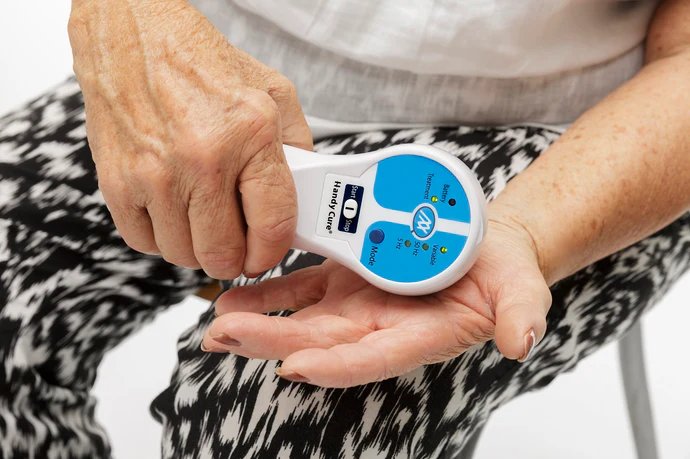In the evolving world of medical technology and alternative treatments, low level laser therapy (LLLT) is gaining recognition as a safe, non-invasive method to support pain relief, promote tissue repair, and reduce inflammation. Also known as cold laser therapy or photobiomodulation (PBM), this therapy has found applications in various fields, including physical therapy, sports medicine, dermatology, dentistry, and veterinary care.
What Is Low-Level Laser Therapy?
Low-level laser therapy (LLLT) utilises low-intensity lasers or LEDs to deliver specific wavelengths of light—typically in the red or near-infrared range—to the body. Unlike high-powered lasers used for cutting or ablative purposes, LLLT does not generate heat or cause tissue damage. Instead, it works at the cellular level by facilitating natural healing processes.
How Does Low-Level Laser Therapy Work?
The therapeutic impact of LLLT lies in a process called photobiomodulation, where light energy is absorbed by cellular components, particularly the mitochondria. Here’s a step-by-step breakdown:
- Light Absorption by Chromophores
When the laser penetrates the skin, its light is absorbed by chromophores specifically cytochrome c oxidase in the mitochondria. - Boosted ATP Production
This absorption increases the production of adenosine triphosphate (ATP), providing cells with more energy to accelerate repair and regeneration. - Reduced Oxidative Stress
LLLT helps minimise harmful free radicals, promoting healthier cell function in inflamed or injured tissue. - Anti‑Inflammatory and Pain‑Relieving Benefits
The therapy supports the release of anti-inflammatory cytokines, suppresses pro-inflammatory signals, and may alter nerve conduction to help ease pain perception. - Enhanced Tissue Repair
With increased energy and decreased inflammation, cells regenerate more effectively, nerves can recover, and new blood vessel formation may be stimulated.
What Conditions Can Low Level Laser Therapy Treat?
Low level laser therapy has been explored for a range of health issues, including:
- Chronic and acute pain back pain, neck pain, fibromyalgia
- Sports injuries such as sprains, strains, and tendonitis
- Arthritic and inflammatory conditions
- Wound healing, including diabetic and non-healing ulcers
- Peripheral neuropathy
- Carpal tunnel and TMJ syndrome
- Hair loss (e.g., androgenetic alopecia)
While not a universal cure, LLLT often serves as a valuable adjunct to conventional medical care, improving symptoms and quality of life.
What Happens During a Low Level Laser Therapy Session?
An LLLT session is simple and comfortable:
- A small handheld device is placed on the skin over the target area.
- The laser (or LED) emits light for a prescribed duration, typically a few seconds to several minutes.
- Patients generally feel nothing—or sometimes a slight warming but no pain or downtime is involved.
Multiple sessions are commonly recommended, especially for chronic conditions, with the number and frequency tailored to individual needs.
Is Low Level Laser Therapy Safe?
LLLT is widely regarded as safe when administered correctly with approved devices. Key benefits include:
- Non-invasive, drug-free treatment with minimal side effects
- Rarely causes temporary redness or mild soreness at the treatment site
- Does not burn or harm tissue
However, it’s important to consult a medical professional before using LLLT, especially in cases involving tumours, thyroid issues, pregnancy, or other sensitive areas.
Exploring Further
For those interested in exploring more about LLLT, especially the advantages of safe, at-home treatment, check out this comprehensive resource: low level laser therapy. It offers detailed insights into how cold laser therapy (also known as soft laser therapy or photobiomodulation) works, its diverse benefits from pain relief and inflammation reduction to wound healing and skin renewal and its convenience for home use.
Win Health Medical Ltd
Why Low Level Laser Therapy Is Growing in Appeal
As people increasingly seek non‑invasive, drug‑free, and self‑administered health solutions, low level laser therapy stands out for several reasons:
- It delivers targeted cellular stimulation without heat or discomfort.
- It supports pain management, healing, and rejuvenation across a wide range of conditions.
- Home-use LLLT devices are now accessible and adhere to rigorous safety standards.
Final Thoughts
At its core, low-level laser therapy harnesses the healing potential of light by enhancing cellular energy (ATP), reducing inflammation, and promoting tissue regeneration. From alleviating chronic pain to accelerating wound healing and rejuvenating skin, LLLT offers a promising, versatile approach to wellness.
